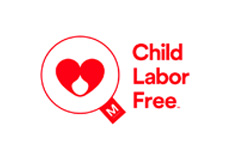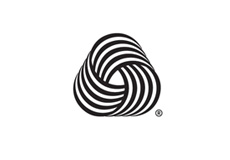Comments (0)

Basic division
Market in free market economies in the 21st century abounds in endless quantities of products and services. It is just the same with the carpets. The possibilities are endless, you can find a carpet by any idea, and design, colours and types of carpets; there are already thousands of them and are all the time supplemented by new models. In this entire range of available carpets you should distinguish the basic division of carpets by the way they are made. There are two types of carpets - handmade rugs and machine woven carpets.
This is a fundamental division, as between different machine-made and hand-woven carpets we can distinguish different methods of making these floor wares. For example, handmade carpets can be distinguished by the following weaving methods: Hand Knotted (eg Persian traditional carpets), handloom - hand-woven on the cut (for example, Gabbeh carpets made by tis technique), Hand Tufted – hand-needled with the special gun for making carpets (eg Indian rugs in modern patterns), Handwoven (Handmade far-east woven carpets) and Hand Embroidered (eg Sumak carpets from Iran).
In the nineteenth century, during the industrial revolution, modernization of looms began, which over time became completely automated. Thanks to technological progress, carpets are widely available. Woven carpets are woven with a machine - a loom that is programmed to the right pattern and runs hundreds of reels, which, by rotation, put the threads in motion. Machine carpet production started primarily in England, where two main weaving centres, Axminster and Wilton, were born – these are not only the names of the cities they came from but also the names of two basic weaving techniques of carpets.
Characteristics of hand-woven carpets
Handmade carpets are produced in different qualities and materials. Density of weaving and quality of raw material are the basic features of the hand-woven rug. A good hand-woven rug that will last for years should have a high weaving density of 90,000 knots per square meter. Smaller weave carpets are usually made of poor quality wool and are not very popular despite a very affordable price. Wool of good quality should have a gloss, thanks to natural grease and the area from which it is obtained. Hand-woven carpets are usually the carpets made of wool, silk, less often from sisal, cotton and other fibres. Hand-woven carpets are uneven, often made using various methods on woollen or cotton warp. The most important feature of hand-woven carpets is the uniqueness of design. Carpet decoration can be modern, abstract, geometric, etc., as well as classic - traditional. Hand-woven carpets can be made of hand-spinned wool as well as machine spinned yarn. These carpets are traditionally dyed with naturally derived vegetable dyes, although more and more often synthetic dyes are being used today. They are hand-cut and trimmed. Making handmade carpets is a hard work that takes a lot of time.For the production of these carpets we need a weaving workshop, tools needed for spinning and dyeing - scraper, spindles and knives. Contemporary hand-woven carpets are produced in areas stretching from Morocco to the west of Asia, through Romania and Bulgaria, Turkey, Iran, Caucasus, Afghanistan, Turkmenistan, Pakistan, India and Tibet and Nepal to distant western China. Thanks to the above features they are more expensive products than machine made ones. The disadvantage of hand-woven woollen carpets is the effect of piling – falling out of fine hairs from the fleece, which bum pup during the use in larger clusters However, this does not apply to all carpets of this type. Carpets, through uneven weave, can have uneven borderline. They have unlimited possibilities of colours and ornamentation. Hand-woven carpets’ fringes are at the same time their warps. Some of these products are valuable works of art exceeding one million knots in a square meter - unique, noble, durable and luxurious. Hand-woven carpet can also be a good investment. Carpets made by hand can be ordered in virtually any size.
Characteristics of machine-woven carpets
Carpets that are machine-woven during production, which is made on a constant width, produce identical two carpets in a mirror image. The colour palette that can be used in one carpet is limited to 10 colours. After the carpet is woven, patterns and sizes are cut and then levelled and trimmed. Many carpets on shorter sides are decorated with fringes, which are made after the steps described above. Production of a machine-woven carpet is very short and takes about an hour, which in turn translates into lower prices of these carpets in relation to hand-woven carpets.
Nowadays, the multitude of companies and the materials used for production provide a huge selection of models, designs and quality of products.Typical materials used in the production of machine-made carpets are natural and synthetic yarns such as wool, cotton, chenille, viscose, polypropylene, acrylic and jute. Each of these materials has its own distinct characteristics. Carpets are offered in low and high density of weaving.
Deciding to buy a machine-made carpet it is worth to read and get familiar with the following terms:
- Axminster –not long pieces of yarn are U-shaped when weaving the bottom of the carpet
- Tufting - rows of needles drive the yarn into the warp of carpeting. The hooks catch the loops when the needle is pulled back and pull the thread to a certain height.
- Wilton - the bottom is knotted at the same time that the thread forms loops on the surface.
- Wilton face to face - At the same time, there are two carpets produced, the yarns go from one to the other carpet, the weaving method reduces the time of carpet formation and the cost of its production.
- Brussels - a loop-shaped fleece made of continuous yarn.
- Velour - loops are formed during machine weaving and then trimmed.
- Cut fleece, looped - is a combination of cut and whole loops. Thanks to this patterns at different heights are obtained.
- Looped fleece - loops are obtained by means of continuous yarn during weaving.
- Cut fleece - is made in the shape of a "U", ie the hair is pointing upwards.
Machine-woven carpets are available in various sizes from 60x90cm to large 300x400cm and larger in standard sizes. Doormats, rugs, rectangular and square rugs are available. These carpets are perfectly equal at the borderline and the fleece. They usually do not dust. Worse machine-woven carpets are less resistant to wear and dirt. Therefore, consider choosing a high density weaving carpet with good raw material. They are, however, a cheaper alternative and are generally available.














